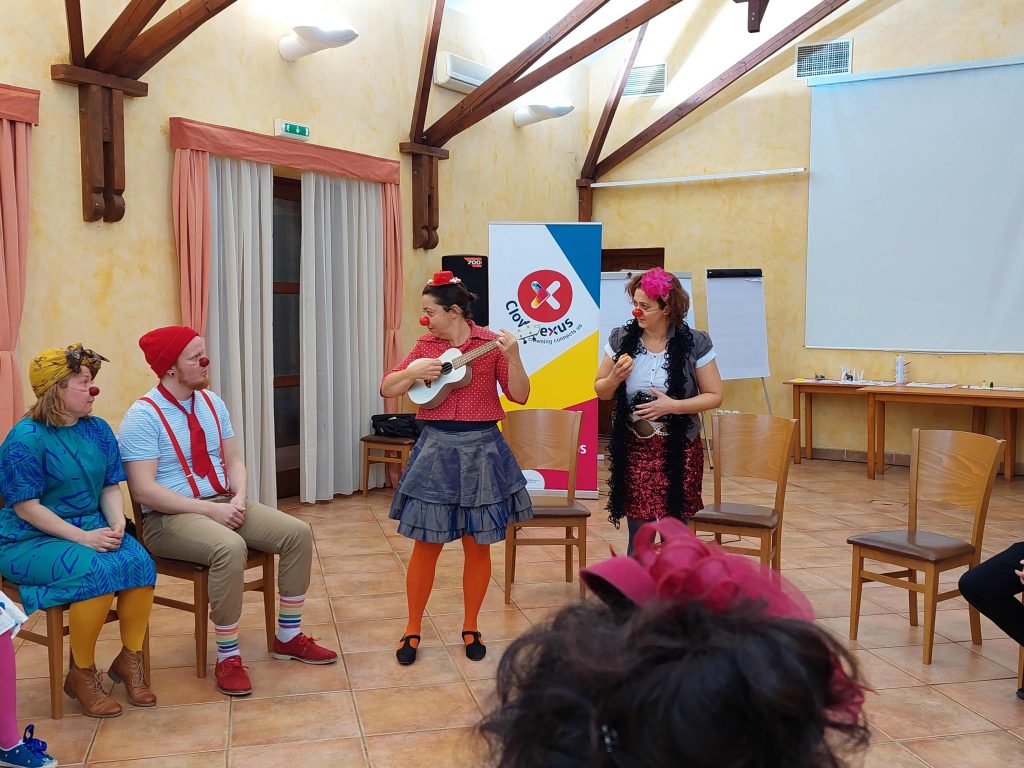Intention: Stimulate the senses and promote connection through sensory engagement.
The materials provided in this activity are designed to be touched, smelled, and listened to. Items such as a bag of leaves invite physical activity and exploration.
They can be squeezed for a calming effect or used to create musical sounds, promoting a collaborative experience between the child and the clown.
The various scents in jars can trigger the imagination and memories. By observing which senses a specific material excites the child’s most, the clown can sensitively support their interaction and shared play.
The clown(s) may mirror the child’s use of materials and gradually introduce more play elements if the child is open to changes. Respect for the child’s timing is vital, as they may prefer repetitive play.
For children with ASD, play often follows a formulaic and repetitive pattern, often focusing more on materials than on individuals.




